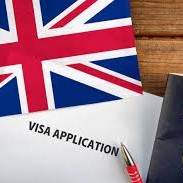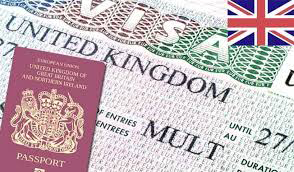UK Visa and Immigration: Your Simple Step-by-Step Plan Applying for a UK visa can seem like a complicated process, but breaking it down into simple steps makes it much easier. Whether you are traveling for work, study, or visiting family, following a clear plan helps avoid delays and mistakes. This guide will walk you through a step-by-step process to successfully apply for UK Visa and Immigration. Step 1: Choose the Right Visa Type The UK offers different visa categories based on the purpose of your visit. Choosing the correct visa type ensures your application meets the required criteria. Some common visa types include: Visitor Visa – For tourism, short visits, or visiting family. Student Visa – For studying at a UK institution. Skilled Worker Visa – For employment in the UK with a valid job offer. Family Visa – For joining a family member already in the UK. Business Visa – For attending business meetings or conferences. Step 2: Check Eligibility Requirements Each visa type has specific eligibility conditions. Common requirements include: A valid passport. Proof of financial stability (bank statements or income proof). A letter of invitation or sponsorship (if applicable). An offer letter (for students or workers). A clean travel history. Checking these requirements early helps avoid delays or rejections. Step 3: Prepare Your Documents The documents you need depend on the type of visa you are applying for. Some essential documents include: Passport – Required for all visa applications. Bank statements – Needed for student, work, and visitor visas. Letter of sponsorship – Required for family and student visas. Job offer letter – Essential for a Skilled Worker Visa. University acceptance letter – Required for a Student Visa. Accommodation details – Necessary for visitor and student visas. Make sure all documents are up to date and translated into English if required. Step 4: Complete the Online Application All UK visa applications must be submitted online. The process includes: Visiting the official UK Visa and Immigration website. Selecting the appropriate visa type and filling in the application form. Providing accurate personal details, travel plans, and supporting information. Paying the visa processing fee using a debit or credit card. Each visa category may have slight variations in the application process, so read the instructions carefully before submission. Step 5: Book a Biometrics Appointment After submitting your application, you must attend a biometrics appointment at a Visa Application Centre. During this appointment, you will: Provide fingerprints and a digital photograph. Submit original documents (if required). Verify your personal information. Scheduling an early appointment helps avoid unnecessary delays. Step 6: Wait for Visa Processing The processing time varies based on the type of visa and the country where you apply. General processing times include: Visitor Visa – Usually processed within 3 weeks. Student Visa – Typically takes around 3 weeks. Skilled Worker Visa – Processing can take between 3 to 8 weeks. Family Visa – May take between 12 to 24 weeks. Priority and super-priority services are available for faster processing. Step 7: Receive Your Visa Decision Once your application is reviewed, you will receive an email or letter with the outcome. Possible decisions include: Approval: A visa vignette (sticker) will be placed in your passport, allowing you to travel. Refusal: You will receive a letter explaining why your visa was denied. If your visa is rejected, you may have the option to reapply or appeal the decision. Step 8: Prepare for Travel to the UK Once you have received your visa, take the following steps before traveling: Double-check the details on your visa for accuracy. Book your flights and accommodation in advance. Carry copies of essential documents, such as financial proof and return tickets. Familiarize yourself with UK immigration rules and your visa conditions. At the UK border, immigration officers may ask for additional details, so ensure your documents are easily accessible. Common Mistakes to Avoid Many visa applications are rejected due to errors or missing information. Here are some common mistakes and how to avoid them: Incorrect application details: Always double-check all information before submission. Insufficient funds: Make sure your bank statements meet the minimum financial requirement. Missing documents: Use a checklist to ensure all necessary papers are included. Weak travel history: If applicable, provide evidence of past international travel. Final Thoughts Applying for UK Visa and Immigration requires careful planning, but following this step-by-step guide simplifies the process. By selecting the right visa, preparing the necessary documents, and avoiding common mistakes, you improve your chances of approval.. Visit our website: https://khurshedlawchamberuk.com






















